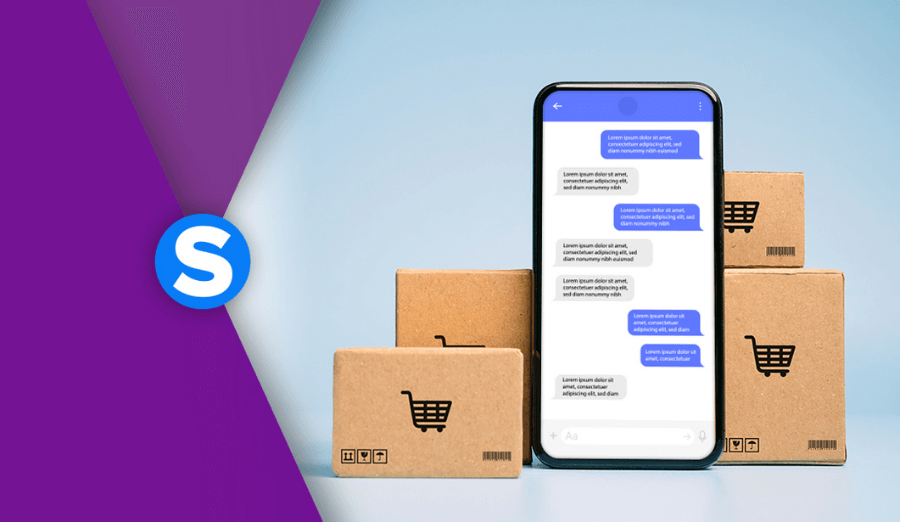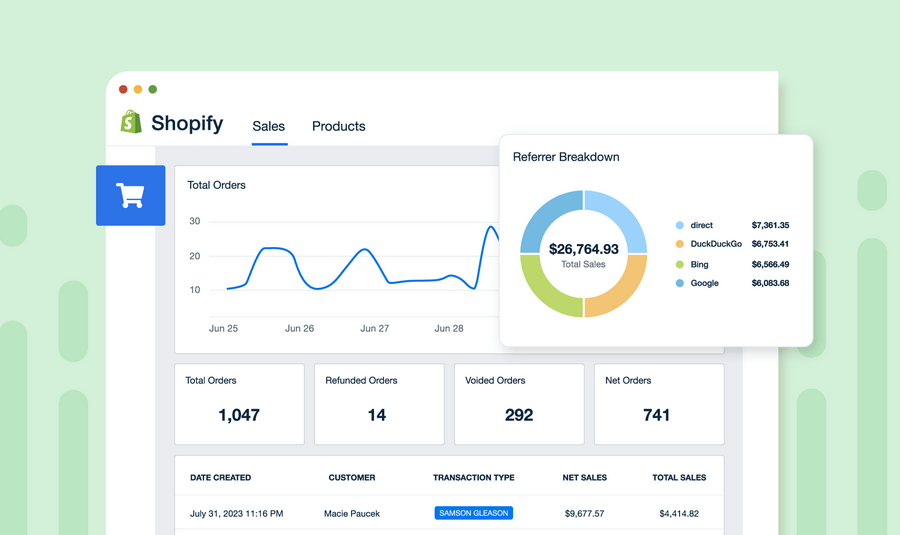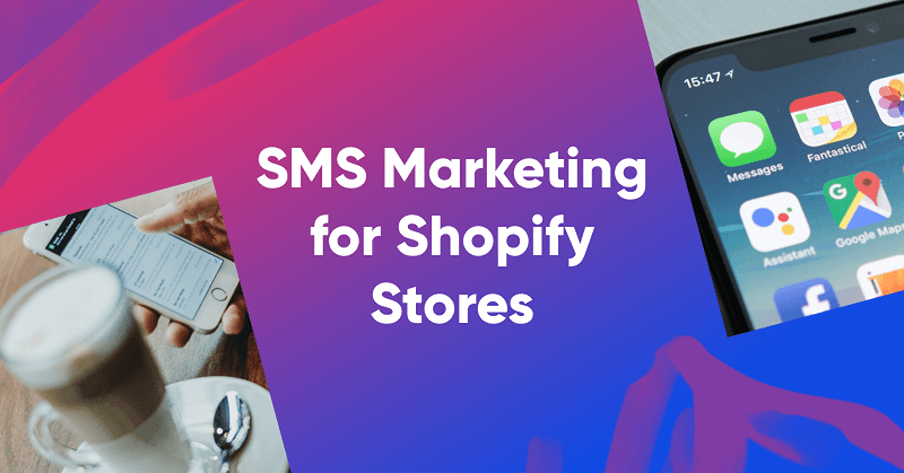📑 Table of Contents
- 1. Personalize Every Message
- 2. Leverage Time-Sensitive Offers
- 3. Segment Your Audience
- 4. Use Two-Way Messaging
- 5. Optimize Timing
- 6. Include Clear Call-to-Actions (CTAs)
- 7. Offer Exclusive Deals
- 8. Keep Messages Short and Sweet
- 9. Test and Optimize Campaigns
- 10. Use Multimedia (MMS)
- 11. Stay Compliant with SMS Laws
- 12. Track and Analyze Performance
- Benefits of SMS Marketing for Shopify Stores
- Understanding Shopify SMS Marketing Basics
SMS marketing isn’t just a trend—it’s a powerful tool that Shopify store owners can use to connect with customers on a personal level. With its unparalleled open rates of 98%, it outshines email and social media marketing in terms of effectiveness. However, to unlock its full potential, you need a strategic approach. This guide dives deep into 12 SMS marketing secrets that will supercharge your Shopify campaigns, ensuring higher conversions, better engagement, and a loyal customer base.
1. Personalize Every Message
Personalization is no longer optional—it’s a necessity. Customers expect brands to understand their needs and preferences. Leverage Shopify’s customer data to craft tailored messages.
How to Implement:
- Use customers’ first names in your messages.
- Reference their recent purchases or browsing history.
- Suggest products based on their preferences.
Example Message:
“Hi [Name], we noticed you loved our [product]! It’s back in stock—order now and enjoy 15% off. Use code WELCOME15. [link]”
Why It Works:
- Builds trust by showing you understand your customers.
- Increases the likelihood of engagement and purchases.
2. Leverage Time-Sensitive Offers
Urgency is one of the most effective psychological triggers in marketing. Time-sensitive offers encourage immediate action, helping you clear inventory or promote special events.
How to Implement:
- Set expiration dates for discounts.
- Use countdown timers in MMS campaigns.
- Send reminders as deadlines approach.
Example Message:
“Flash Sale! Get 20% off all items for the next 24 hours only. Don’t miss out—shop now: [link]”
Why It Works:
- FOMO (Fear of Missing Out) drives quick decision-making.
- Creates a sense of exclusivity and excitement.
3. Segment Your Audience
One-size-fits-all messages don’t work anymore. Segment your audience to send more relevant and targeted campaigns.
How to Segment:
- Based on past purchases: “Repeat buyers vs. first-time shoppers.”
- Location: “Target customers near a physical store.”
- Engagement level: “Frequent buyers vs. inactive users.”
Example Campaigns:
- For new customers: “Welcome! Enjoy 15% off your first order with us. Use code NEW15: [link].”
- For loyal customers: “Thank you for being a VIP! Exclusive 30% off just for you. [link]”
Why It Works:
- Customers feel like you understand their needs.
- Boosts engagement and conversions by providing relevant offers.
4. Use Two-Way Messaging
Two-way communication turns SMS marketing into a conversation, not a broadcast. Engaging with your audience in real-time builds trust and deepens relationships.
How to Implement:
- Offer customer support via SMS.
- Conduct polls or surveys to collect feedback.
- Use auto-replies for FAQs.
Example Message:
“Need help choosing the right product? Text us your questions, and our team will assist you right away! Reply with HELP.”
Why It Works:
- Creates a more interactive customer experience.
- Helps resolve issues quickly, reducing cart abandonment.
5. Optimize Timing
Timing can make or break your SMS campaigns. Sending messages when customers are likely to read them increases engagement.
Best Practices for Timing:
- Analyze your audience’s behavior to determine peak activity times.
- Avoid early morning or late-night texts.
- Test different times and days to find what works best.
Example Message:
“Good morning! Start your day with 15% off on all orders. Offer ends at midnight: [link].”
Why It Works:
- Reaches customers when they’re most likely to take action.
- Minimizes annoyance from untimely texts.

6. Include Clear Call-to-Actions (CTAs)
Every SMS message must guide customers toward a specific action. A clear, compelling CTA drives engagement and ensures your campaign’s success.
How to Write Effective CTAs:
- Use action-oriented language like “Shop Now,” “Claim Your Deal,” or “Reserve Your Spot.”
- Place the CTA near the beginning or end of the message.
- Keep it simple and specific.
Example Message:
“Your exclusive deal is here! Click below to claim 25% off your next purchase. Act fast: [link].”
Why It Works:
- Provides clear direction to customers.
- Increases click-through rates and conversions.
7. Offer Exclusive Deals
Reward your SMS subscribers with perks they can’t find elsewhere. Exclusive deals give customers a reason to stay subscribed and engaged.
Ideas for Exclusive Deals:
- Early access to sales.
- Subscriber-only discounts.
- Free gifts with purchase.
Example Message:
“VIP Alert! Enjoy 20% off our new arrivals. This offer is only for our SMS family. Shop now: [link]”
Why It Works:
- Makes subscribers feel special.
- Encourages repeat purchases and long-term loyalty.
8. Keep Messages Short and Sweet
SMS messages are meant to be quick and digestible. Focus on your core message and eliminate unnecessary details.
How to Simplify Messages:
- Stick to 1-2 sentences.
- Use emojis sparingly to add personality.
- Include a link to a landing page for more details.
Example Message:
“Free shipping today only! Shop your favorites now: [link]”
Why It Works:
- Short messages are easier to read and act on.
- Prevents overwhelming customers with too much information.
9. Test and Optimize Campaigns
Even the best campaigns can be improved. Regular A/B testing ensures you’re sending the most effective messages.
What to Test:
- Different CTAs.
- Variations in timing.
- Tone (casual vs. formal).
Tools to Use:
- Shopify’s built-in analytics.
- Third-party SMS marketing platforms like Klaviyo or Postscript.
Why It Works:
- Data-driven decisions lead to better performance.
- Helps refine your overall strategy.
10. Use Multimedia (MMS)
Static text isn’t always enough. Multimedia messages, such as images, GIFs, or videos, capture attention and make your campaigns more engaging.
How to Use MMS:
- Show product demos or styling ideas.
- Announce new collections with eye-catching visuals.
- Include QR codes for in-store promotions.
Example Message:
“New arrivals are here! Check out our latest collection and find your next look. [Image link]”
Why It Works:
- Grabs attention more effectively than plain text.
- Makes messages visually appealing and memorable.
11. Stay Compliant with SMS Laws
Compliance is crucial to avoid legal issues and maintain customer trust. Always follow regulations like GDPR, TCPA, or CAN-SPAM.
Best Practices:
- Obtain explicit consent before sending messages.
- Include a clear opt-out option in every SMS.
- Avoid sending spam or excessive messages.
Example Message:
“You’re receiving this message because you opted in. Reply STOP to unsubscribe at any time.”
Why It Works:
- Builds credibility with your audience.
- Prevents potential fines or penalties.
12. Track and Analyze Performance
The key to improving your SMS campaigns lies in understanding their performance. Use data to identify strengths and weaknesses.
Metrics to Track:
- Open rate.
- Click-through rate (CTR).
- Conversion rate.
- Opt-out rate.
Why It Matters:
- Helps you optimize campaigns for better results.
- Ensures you’re investing resources wisely.
Benefits of SMS Marketing for Shopify Stores
High Open Rates and Immediate Impact
- SMS messages are typically opened within 3 minutes of delivery, making them ideal for time-sensitive promotions.
- With an open rate exceeding 90%, SMS far outperforms email marketing in terms of visibility.
- Customers are more likely to act quickly on SMS offers, boosting the effectiveness of flash sales or limited-time discounts.
- The real-time nature of SMS helps Shopify stores respond swiftly to market trends and customer needs.
Direct Engagement with Customers
- SMS provides a personal and intimate way to reach customers, fostering a sense of exclusivity.
- It bypasses crowded communication channels like email and social media, ensuring your message gets noticed.
- Two-way SMS options allow for direct customer feedback and interaction, enhancing engagement.
- Personalized messages, such as birthday offers or location-based alerts, create a stronger emotional connection.
Increased Conversions and Customer Retention
- Abandoned cart reminders sent via SMS have a higher recovery rate compared to emails.
- Exclusive promotions or VIP-only sales shared through SMS incentivize immediate action, driving conversions.
- Regular updates, such as order confirmations and shipping notifications, keep customers informed and engaged.
- Loyalty programs promoted through SMS encourage repeat purchases, improving customer retention over time.
Understanding Shopify SMS Marketing Basics
Integrating SMS Apps with Shopify
- Shopify makes it easy to integrate SMS marketing tools through its app ecosystem.
- SMS apps seamlessly sync with your store’s data, enabling automated campaigns based on customer behavior, such as abandoned cart reminders or post-purchase follow-ups.
- These integrations often come with user-friendly dashboards for campaign creation, analytics, and real-time tracking.
- Most apps offer pre-built templates and workflows, making it simple for Shopify store owners to start SMS campaigns without technical expertise.
Overview of Popular Shopify SMS Apps
- Klaviyo: Known for its advanced segmentation and automation capabilities, Klaviyo combines SMS with email for a comprehensive marketing approach.
- SMSBump: A Shopify favorite, SMSBump excels in creating high-converting SMS campaigns with features like A/B testing, segmentation, and ROI tracking.
- Postscript: Tailored for Shopify, Postscript offers easy setup, powerful integrations, and detailed analytics to measure campaign success.
- Each app caters to different business sizes and needs, so choosing the right one depends on your specific goals and budget.
Compliance and Opt-In Regulations (e.g., TCPA and GDPR)
- TCPA (U.S.): Requires explicit customer consent before sending marketing SMS messages. Non-compliance can lead to hefty fines.
- GDPR (EU): Protects customer privacy by requiring clear opt-in processes and secure handling of personal data.
- Best Practices:
- Use double opt-in mechanisms to confirm subscribers’ consent.
- Clearly communicate how customers’ data will be used and provide easy opt-out options.
- Regularly review and update your compliance policies to adhere to evolving regulations.
- Adhering to these rules builds trust with your audience and avoids legal complications.

Final Thoughts
SMS marketing is a powerful tool for Shopify store owners, but success requires a strategic approach. By personalizing messages, leveraging urgency, and constantly optimizing your campaigns, you can drive engagement and grow your business. Start applying these 12 secrets today, and watch your Shopify sales soar!
